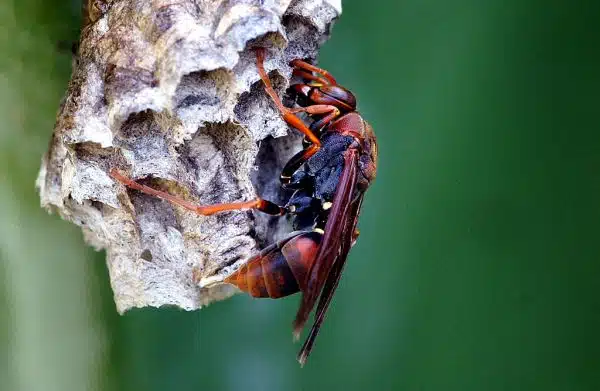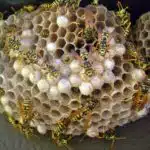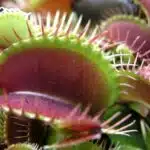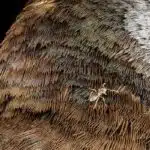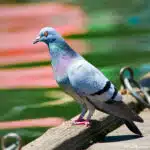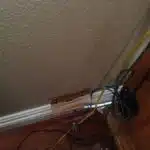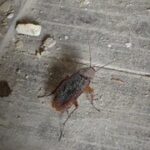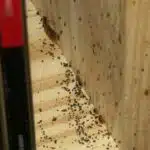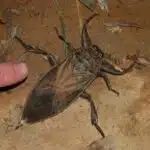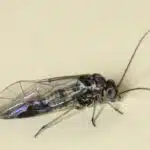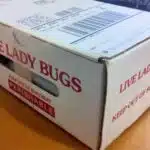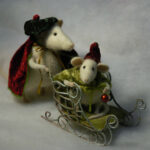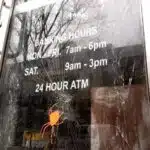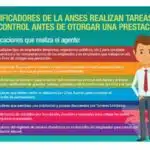Paper wasps are a common sight in many parts of the world and can be a nuisance for homeowners who want to enjoy their outdoor spaces. These insects are known for their distinctive appearance, with long, slender bodies and narrow waists. While they may look harmless, paper wasps can deliver a painful sting if provoked or threatened.
Getting rid of paper wasps can be a daunting task for those who are unfamiliar with these insects’ behavior and habitat. However, with the right knowledge and tools, it is possible to eliminate these pests safely and effectively. In this article, we will explore some of the most effective methods for getting rid of paper wasps and preventing them from returning to your property. Whether you are dealing with a small infestation or a larger one, our tips and techniques will help you get rid of paper wasps quickly and efficiently.
Identifying Paper Wasps
Paper wasps are a common sight in many parts of the world, with their distinctive slender bodies and long wings. These insects are part of the Vespidae family, which includes other types of wasps and hornets. The paper wasp gets its name from the thin, papery material it uses to construct its nest.
The anatomy of a paper wasp is unique, with a narrow waist that separates the thorax from the abdomen. The wingspan can vary depending on the species but typically measures between 1-2 inches. Their coloring is predominantly black or brown with yellow markings on their heads and abdomens. Paper wasps build nests in protected areas such as under eaves, roof peaks, or tree branches, often hanging down like an umbrella.
To effectively get rid of paper wasps, one must first understand their behavior patterns. Understanding how they live and interact with their environment is crucial to developing effective control strategies. Therefore, it’s essential to know about their social structure, feeding habits, and nesting patterns before implementing any extermination method. By doing so, you can avoid unnecessary harm to these beneficial but sometimes problematic insects.
Understanding Paper Wasp Behavior
As entomologists, it is essential to understand the behavior of paper wasps to control their infestation. Paper wasps are social insects that build nests made of a paper-like material, which they make by chewing and mixing wood fibers with saliva. These nests can be found in various places such as eaves, attics, and wall voids. The colonies are founded in the spring by a single queen who begins to build the nest and lay eggs.
Paper wasps are territorial insects and can become aggressive when threatened or disturbed. They sting repeatedly, unlike honeybees that can only sting once before dying. The venom from their stings is potent and can cause severe allergic reactions in some individuals. Therefore, early intervention is crucial when dealing with paper wasp infestations.
The Importance of early intervention cannot be overstated when dealing with paper wasps. When left unchecked, their populations can grow exponentially over time, leading to larger nests and more dangerous situations for homeowners. By understanding their behavior patterns and acting quickly at the first sign of an infestation, pest control specialists can prevent more significant problems from occurring down the line.
Transitioning into determining the size of the infestation – After understanding how these insects behave, our next step is to determine the size of the infestation accurately. This step is vital as it helps us develop an effective strategy for managing the problem.
Determining The Size Of The Infestation
It’s a common misconception that paper wasps are harmless creatures, and their nests can coexist with humans peacefully. Unfortunately, this is far from the truth. Paper wasps are known for their aggressive behavior and painful stings, which can be life-threatening to individuals with allergies. Therefore, it’s crucial to determine the size of the infestation before taking any action.
Measuring the infestation involves identifying the number of nests present in and around your property. Paper wasp nests typically have a papery texture and are shaped like an upside-down umbrella. They’re often found in eaves, under roof tiles, or attached to tree branches and shrubs. Counting the number of active nests will help you gauge how severe the infestation is.
Once you’ve measured the infestation, it’s time to consider your options for controlling it. There are several infestation control techniques available, including using insecticides or calling pest control professionals. However, before taking any action, it’s essential to assess the risk of stings to yourself and others in your household.
Assessing The Risk Of Stings
After determining the size of the paper wasp infestation, it is important to assess the risk of stings before attempting any removal methods. This involves considering the location of the nest, the behavior of the wasps, and any previous encounters with people or pets. It is also important to identify any individuals who may be allergic to wasp stings and take appropriate precautions.
Assessing risk is crucial in determining what type of protective gear is necessary for safely removing a paper wasp nest. In general, it is recommended to wear long sleeves and pants, as well as gloves and goggles. However, if there is a high risk of stings or an individual has a known allergy, a full-body suit may be necessary for optimal protection.
Using protective gear can greatly reduce the risk of being stung by paper wasps during removal efforts. Not only does it provide physical protection from their stingers, but it also helps to minimize contact with potential allergens. It is important to follow all safety guidelines when using protective gear and properly dispose of any contaminated clothing or equipment after use. By taking these precautions, individuals can safely remove paper wasp nests without putting themselves or others at unnecessary risk.
Using Protective Gear
As you prepare to rid your property of paper wasps, it is essential to use proper protective gear. Protective gear acts as a barrier between you and the wasps and minimizes the risk of getting stung. It is important to note that different types of protective gear are available for different situations.
Firstly, consider wearing long-sleeved shirts and pants made from thick material such as denim or leather. This will protect your skin from direct contact with the wasps and their stingers. Secondly, put on a pair of gloves made with thick material such as leather or rubber to protect your hands from being stung. Lastly, wear a hat with a veil or netting over your face to prevent wasps from entering sensitive areas like your eyes, nose, and mouth.
When using protective gear, it is crucial to ensure that you are using it correctly. Make sure there are no gaps in between the clothing items where wasps can enter. Ensure the gloves fit snugly around your wrists so that they do not come off during an attack. Additionally, inspect all gear before use to ensure that there are no holes or tears in them which may leave you vulnerable.
Choosing the right type of protective gear and using it properly is vital when dealing with paper wasps. However, it is only one step towards effective elimination of these pests. The next step involves selecting the right time of day for treatment- this will be explored in detail in the subsequent section.
Choosing The Right Time Of Day For Treatment
When it comes to getting rid of paper wasps, timing is key. Choosing the right time of day for treatment can greatly impact the effectiveness of your efforts. Best practices suggest treating paper wasps in the late evening or early morning when they are less active and more likely to be inside their nest.
Treating paper wasps during the day can be a common mistake. This is because they are typically more active during this time and may become agitated by the disturbance, leading to defensive behavior. Additionally, daytime treatments may not penetrate deep enough into the nest since many of the wasps will be outside.
Late evening or early morning treatments allow for better penetration into the nest while minimizing the risk of provoking an attack from defensive wasps. It’s important to note that even with proper timing, protective clothing and equipment should always be worn to avoid stings. The table below summarizes the best times for treating paper wasp nests:
| Time of Day | Activity Level | Best for Treatment? |
|---|---|---|
| Early Morning | Low | Yes |
| Midday | High | No |
| Late Afternoon/Early Evening | Medium-Low | Yes |
Next, we will discuss using natural repellents as another option for getting rid of paper wasps without resorting to chemical treatments.
Using Natural Repellents
With the increasing awareness of environmental preservation, more people are turning to natural alternatives for pest control. Fortunately, there are several DIY options and homemade solutions available that can help repel paper wasps without harming them or the environment.
One effective natural repellent is peppermint oil, which has a strong scent that paper wasps find unpleasant. To use this method, mix a few drops of peppermint oil with water and spray it around your home’s windowsills, eaves, and other areas where paper wasps are known to build their nests. Another option is to hang peppermint oil-soaked cotton balls in these areas.
Another natural repellent that you can use is citrus oil. This essential oil is known for its insecticidal properties and can effectively deter paper wasps. Simply mix a few drops of citrus oil with water or vinegar and spray it on the affected areas. You can also place citrus peels in these areas as an additional deterrent.
In conclusion, if you’re looking for natural ways to get rid of paper wasps without causing harm to them or the environment, consider using DIY options and homemade solutions such as peppermint oil and citrus oil. These methods can be just as effective as traditional pest control treatments but are much safer and eco-friendly. In the next section, we’ll discuss how to safely remove paper wasp nests from your property without getting stung.
Removing Paper Wasp Nests
Paper wasps are a common pest that can be found in many regions of the world. These insects are known for building small, paper-like nests that hang from trees, eaves, or other structures. While paper wasps may not be as aggressive as other types of wasps, they can still pose a danger to humans and pets. Therefore, it is important to know how to remove their nests safely and effectively.
There are two main ways to remove paper wasp nests: DIY solutions and professional removal. DIY solutions may include using a long-range spray or knocking down the nest with a long pole. However, it is important to note that these methods can be dangerous and should only be attempted by those who are experienced and trained. Professional removal services are often the best option for removing paper wasp nests, as they have the necessary equipment and expertise to do so safely.
If you choose to use professional removal services, make sure you hire a licensed pest control specialist who has experience dealing with paper wasp infestations. A good pest control company will use safe and effective methods to remove the nest without harming any surrounding plants or animals. They will also take steps to prevent future infestations by identifying potential nesting sites and sealing them off.
Transition into the subsequent section about ‘using insecticides’: Once the paper wasp nest has been removed, there are several measures that can be taken to prevent future infestations. One such measure is using insecticides designed specifically for paper wasps. These products are available at most hardware stores and can be applied around your home’s exterior to deter these pests from returning.
Using Insecticides
While there are several methods to eliminate paper wasps, using insecticides remains the most effective way. Insecticides are chemical substances that target and kill insects. They come in different forms such as sprays, dusts, and baits. However, before using insecticides, it is important to investigate the truth of a theory that suggests they may cause harm to human health and the environment.
Types of insecticides include contact insecticides which kill insects upon contact with their bodies; systemic insecticides which are absorbed by plants and protect them from pests; and fumigants which release gas to eliminate insects in enclosed spaces. To ensure safety when using these products, it is important to follow safety precautions such as wearing protective clothing like gloves and masks, keeping the treated area well-ventilated, and storing the product away from children and pets. Additionally, users should read the label carefully for instructions on usage and disposal.
When using insecticides proves too difficult or dangerous, hiring a pest control professional may be necessary. Pest control professionals have specialized knowledge on how to handle infestations without causing harm to themselves or their surroundings. They can also advise on the best type of insecticide for a particular situation and provide guidance on its safe use. However, before hiring a pest control professional, it is important to research their qualifications and certifications to ensure their credibility.
Hiring A Pest Control Professional
Using insecticides to get rid of paper wasps may seem like an effective DIY solution for homeowners. However, it can also be dangerous and ineffective when not used correctly. While some store-bought insecticides may kill the wasps on contact, they do not necessarily eliminate the entire nest. This can lead to the return of paper wasps in the future. Moreover, using insecticides without proper protective gear can put individuals at risk of getting stung.
Hiring a pest control professional has its benefits when dealing with paper wasp infestations. Pest control professionals have access to specialized equipment and insecticides that are more effective in eliminating wasp nests. They are also trained to safely handle these materials and have the necessary protective gear to prevent accidental stings. Additionally, hiring a professional ensures that all potential nests are located and removed, reducing the likelihood of reinfestation.
When choosing between a DIY or professional approach for paper wasp removal, it is important to consider both short-term and long-term costs. While DIY methods may seem cheaper initially, they can end up costing more if multiple attempts are needed or if someone gets injured during the process. On the other hand, hiring a professional may seem more expensive upfront but can ultimately save money by ensuring complete removal and preventing future infestations.
Preventing paper wasps from returning requires certain precautions such as sealing entry points, trimming vegetation around homes regularly, and removing sources of food such as open garbage cans or pet food left outside. By taking preventative measures and considering all options for removal, homeowners can successfully eliminate paper wasp infestations while also ensuring their safety and peace of mind.
Preventing Paper Wasps From Returning
One of the most effective ways to prevent paper wasps from returning is by eliminating their food sources. Paper wasps feed on insects and spiders, so reducing these populations can help to deter them from nesting in the area. This can be achieved through regular pest control measures, such as using insecticides or natural predators like birds or bats.
Another long-term solution for preventing re-infestation is by removing potential nesting sites. Paper wasps prefer to build their nests in sheltered locations, such as under eaves, porches or in trees. By sealing off these areas with caulking or mesh, you can make it more difficult for paper wasps to find a suitable location to nest. It is also important to remove any existing nests that may be present in the area.
Overall, preventing paper wasp infestations requires a combination of both short-term and long-term solutions. While quick fixes like insecticides may provide temporary relief, they are not effective at preventing future infestations. By taking proactive steps like eliminating food sources and removing potential nesting sites, you can create an environment that is less attractive to paper wasps and reduce the likelihood of future problems arising. Transition: To further prevent paper wasp infestations, it is important to seal off entry points that may allow them into your home or building.
Sealing Entry Points
A key step in preventing paper wasps from entering your property is to identify and seal all possible entry points. Paper wasps can enter through the tiniest crevices, gaps or openings in doors, windows, siding, roofing, and even ventilation systems. It’s important to carefully inspect your property for any potential entry points and seal them promptly.
One of the most effective DIY solutions to sealing entry points is by using silicone caulk or expanding foam insulation. These products can be used to fill small gaps and cracks that may serve as entry points for paper wasps. It’s important to apply these products carefully and precisely to avoid creating additional entry points or blocking essential ventilation systems.
Preventing re-entry should also be considered when sealing entry points. Ensure that all windows, doors, vents, chimneys, and eaves are fitted with tight-fitting screens or covers that are specifically designed to keep out paper wasps. Regular inspections of these screens or covers should be conducted to ensure they are free from damage or wear and tear.
By properly sealing all possible entry points using DIY solutions like silicone caulk or expanding foam insulation and preventing re-entry with tight-fitting screens or covers, you can effectively keep paper wasps out of your property. The next step in ensuring a pest-free environment is by keeping your property clean and free from any attractants that may draw paper wasps back into your space.
Keeping Your Property Clean
Sealing entry points is a crucial step in keeping paper wasps away from your property. However, it is not enough to rely solely on this method. Property maintenance and cleanliness tips are also necessary to prevent these pests from invading your space.
To begin with, maintaining a clean and clutter-free environment is vital in preventing paper wasps from building their nests. Make sure to keep outdoor areas free of debris and garbage, as they can attract these pests. Regularly trim overgrown vegetation around your property, as this can provide an ideal location for paper wasps to build their nest.
Another important tip for keeping paper wasps at bay is to educate your family and neighbors about these pests. Encourage them to maintain a clean environment and avoid leaving food or drinks outside unattended, as these can attract paper wasps. If you notice any paper wasp activity around your property, inform your neighbors so that they can take the necessary precautions to prevent an infestation.
In conclusion, sealing entry points is just one step in preventing a paper wasp infestation. Maintaining a clean and clutter-free environment around your property is equally important. Additionally, educating your family and neighbors about these pests will help ensure that everyone takes the necessary steps to prevent an infestation from occurring. By following these tips, you can enjoy a pest-free home and outdoor space.
Educating Your Family And Neighbors
It is essential to educate your family and neighbors about paper wasps. These insects can be dangerous, especially if you or someone in your community is allergic to their stings. To avoid any mishaps, it is crucial to have a clear understanding of the behavior and nesting habits of these wasps.
Community education plays a vital role in preventing paper wasp infestations. As part of this effort, consider hosting informational sessions for your neighbors on how to identify and remove paper wasp nests safely. Additionally, ensure that everyone knows the precautions they need to take around these insects, such as avoiding sudden movements that may provoke them.
Safety precautions are necessary when dealing with paper wasps. Always wear protective clothing such as long-sleeved shirts, pants, gloves, and goggles when removing nests. If you are allergic to their stings or unsure about handling them on your own, it is best to call pest control professionals who can safely remove the nest for you.
To continue keeping your property free from future infestations, monitoring is essential. Regularly inspect your home’s exterior for any signs of new nests forming and promptly remove them before they become too large. Additionally, keep an eye out for any places where paper wasps may build their nests in the future, such as eaves or other sheltered areas. By taking these steps proactively, you can ensure a safe living environment for yourself and your community.
Monitoring Your Property For Future Infestations
Property inspection is a crucial step in preventing future infestations of paper wasps. Regularly inspecting your property can help you identify potential nesting sites and take preventive measures before it becomes a major problem. Start by inspecting the eaves, attics, and other hidden areas where paper wasps might build their nests. Check for any signs of activity such as buzzing sounds or the presence of wasps.
Early detection is key to preventing paper wasp infestations from spreading. By catching the problem early, you can take action before it becomes too severe. One effective method for detecting paper wasps is to use pheromone traps which can lure them in and trap them before they have a chance to build their nests. Another option is to use visual inspections to identify potential nesting sites or signs of activity.
To further prevent future infestations, follow these three tips:
- Eliminate standing water sources around your property as paper wasps require water to survive.
- Remove any fallen fruits or other food sources that may attract paper wasps.
- Seal any potential entry points such as cracks and crevices that could allow paper wasps into your home.
By regularly inspecting your property and taking preventive measures, you can avoid future infestations of paper wasps and keep your home safe from these stinging pests. Remember, early detection is key – so be sure to take action at the first sign of an infestation!
Conclusion
Paper wasps can be a nuisance for homeowners, but with the right knowledge and precautions, they can be managed effectively. Identifying the species of paper wasp is crucial in determining the best course of action. Understanding their behavior patterns and assessing the size of the infestation are key factors in creating a plan for removal.
Protective gear should always be worn when approaching an active nest to prevent stings. Sealing entry points and keeping property clean can deter paper wasps from building nests in the first place. Educating family members and neighbors on how to spot and avoid paper wasp activity can also aid in prevention.
Monitoring your property for future infestations is important as paper wasps are known to return to previous nesting sites. Remember to take necessary precautions, such as wearing protective gear, when dealing with these pests. With these tips, you can successfully manage paper wasp activity on your property and enjoy a more comfortable living environment.
Image Credits
- “Australian paper wasp.” by Bernard Spragg (featured)

